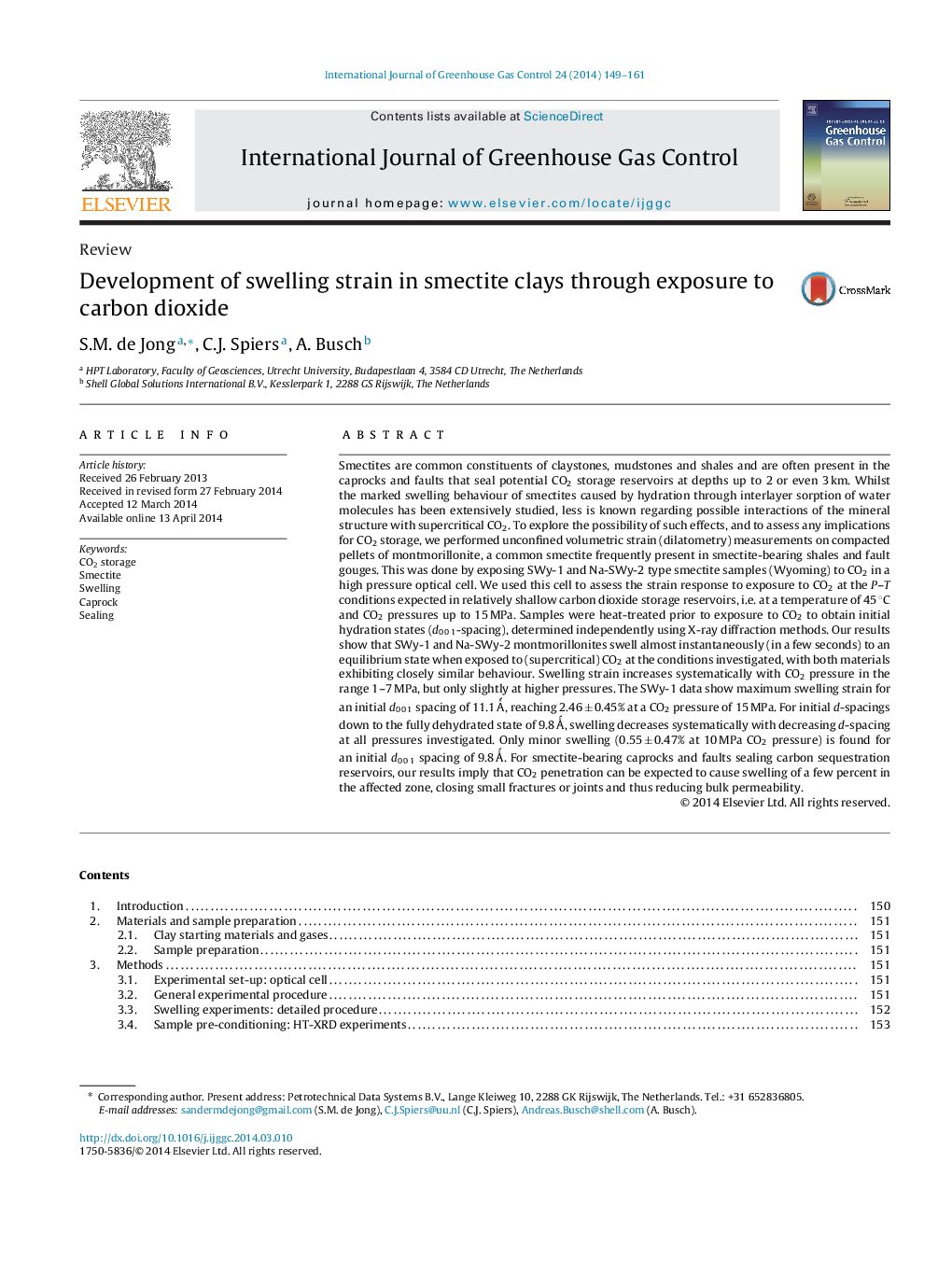| کد مقاله | کد نشریه | سال انتشار | مقاله انگلیسی | نسخه تمام متن |
|---|---|---|---|---|
| 8091444 | 1521997 | 2014 | 13 صفحه PDF | دانلود رایگان |
عنوان انگلیسی مقاله ISI
Development of swelling strain in smectite clays through exposure to carbon dioxide
ترجمه فارسی عنوان
توسعه سویه تورم در رس ها از طریق تماس با دی اکسید کربن
دانلود مقاله + سفارش ترجمه
دانلود مقاله ISI انگلیسی
رایگان برای ایرانیان
کلمات کلیدی
موضوعات مرتبط
مهندسی و علوم پایه
علوم زمین و سیارات
فرآیندهای سطح زمین
چکیده انگلیسی
Smectites are common constituents of claystones, mudstones and shales and are often present in the caprocks and faults that seal potential CO2 storage reservoirs at depths up to 2 or even 3 km. Whilst the marked swelling behaviour of smectites caused by hydration through interlayer sorption of water molecules has been extensively studied, less is known regarding possible interactions of the mineral structure with supercritical CO2. To explore the possibility of such effects, and to assess any implications for CO2 storage, we performed unconfined volumetric strain (dilatometry) measurements on compacted pellets of montmorillonite, a common smectite frequently present in smectite-bearing shales and fault gouges. This was done by exposing SWy-1 and Na-SWy-2 type smectite samples (Wyoming) to CO2 in a high pressure optical cell. We used this cell to assess the strain response to exposure to CO2 at the P-T conditions expected in relatively shallow carbon dioxide storage reservoirs, i.e. at a temperature of 45 °C and CO2 pressures up to 15 MPa. Samples were heat-treated prior to exposure to CO2 to obtain initial hydration states (d0 0 1-spacing), determined independently using X-ray diffraction methods. Our results show that SWy-1 and Na-SWy-2 montmorillonites swell almost instantaneously (in a few seconds) to an equilibrium state when exposed to (supercritical) CO2 at the conditions investigated, with both materials exhibiting closely similar behaviour. Swelling strain increases systematically with CO2 pressure in the range 1-7 MPa, but only slightly at higher pressures. The SWy-1 data show maximum swelling strain for an initial d0 0 1 spacing of 11.1 Ǻ, reaching 2.46 ± 0.45% at a CO2 pressure of 15 MPa. For initial d-spacings down to the fully dehydrated state of 9.8 Ǻ, swelling decreases systematically with decreasing d-spacing at all pressures investigated. Only minor swelling (0.55 ± 0.47% at 10 MPa CO2 pressure) is found for an initial d0 0 1 spacing of 9.8 Ǻ. For smectite-bearing caprocks and faults sealing carbon sequestration reservoirs, our results imply that CO2 penetration can be expected to cause swelling of a few percent in the affected zone, closing small fractures or joints and thus reducing bulk permeability.
ناشر
Database: Elsevier - ScienceDirect (ساینس دایرکت)
Journal: International Journal of Greenhouse Gas Control - Volume 24, May 2014, Pages 149-161
Journal: International Journal of Greenhouse Gas Control - Volume 24, May 2014, Pages 149-161
نویسندگان
S.M. de Jong, C.J. Spiers, A. Busch,
